
WHITNEY MUSEUM OF AMERICAN ART
—————————————
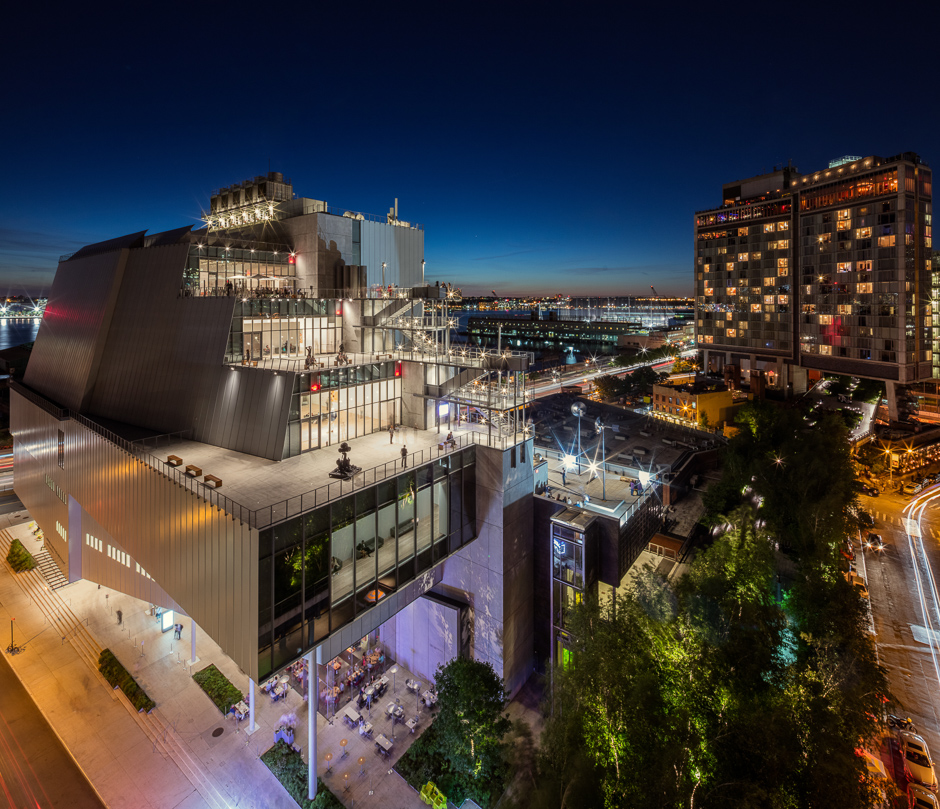
View of the Whitney from the Southeast. Photo by Ben Gancsos.
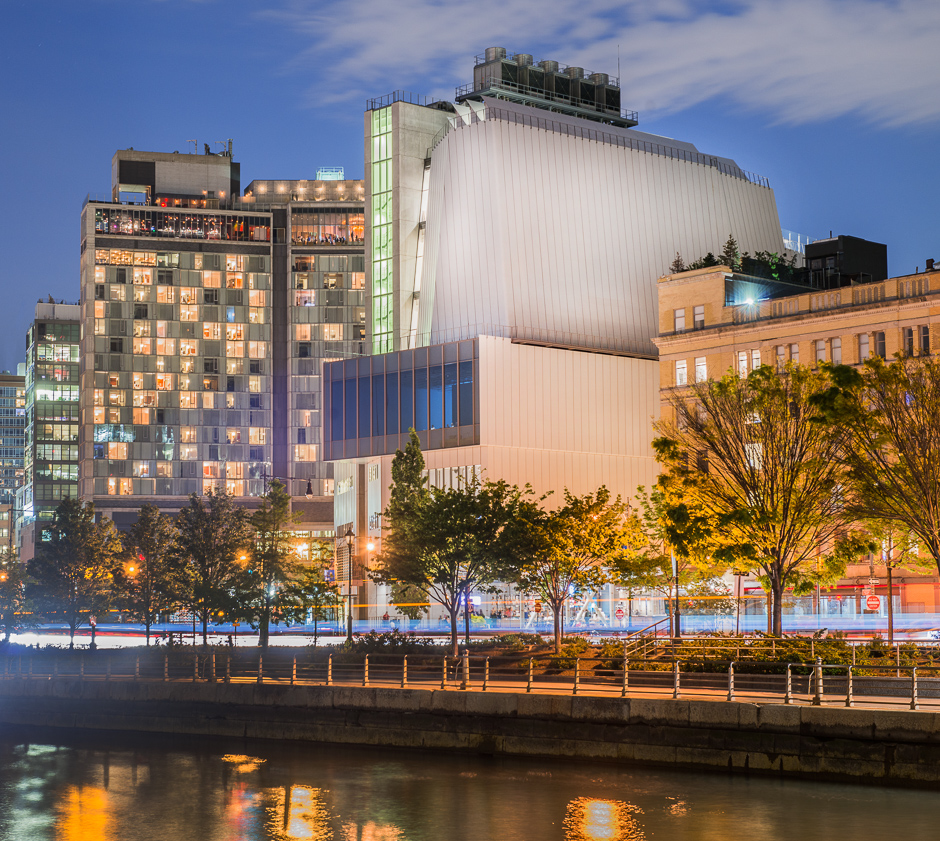
View of Whitney Museum from the Hudson River. Photograph by Karin Jobst.
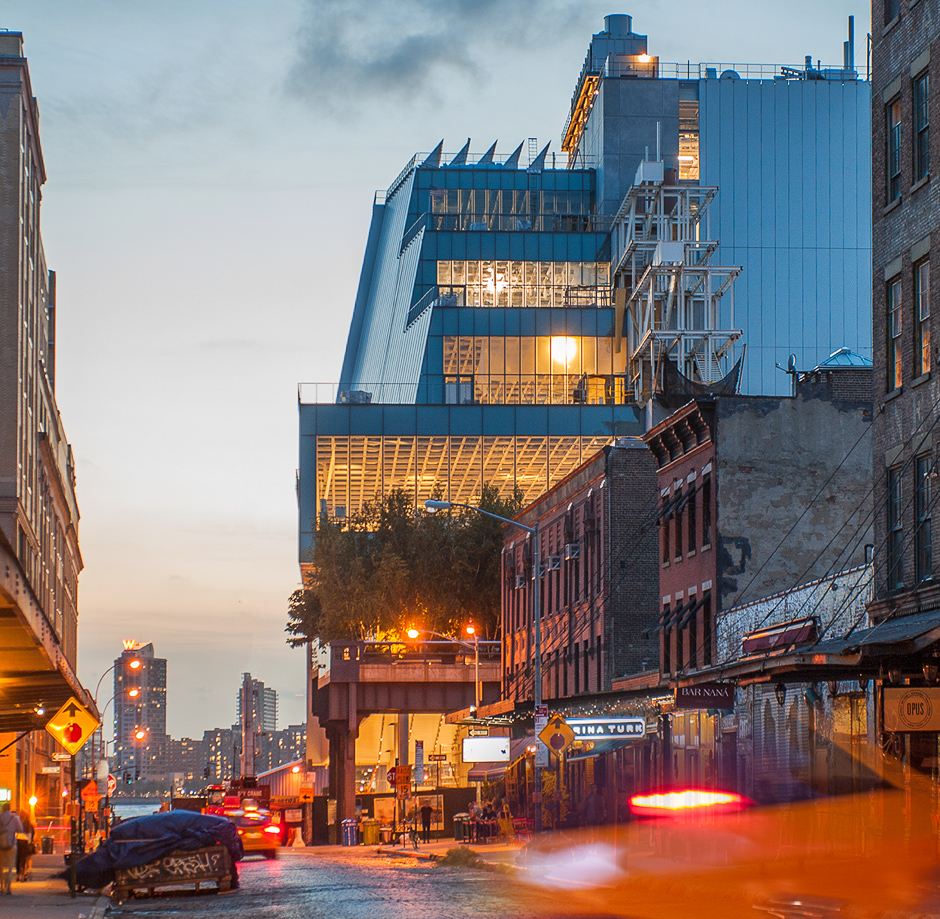
View from Gansevoort Street. Photo by Karin Jobst, 2014.
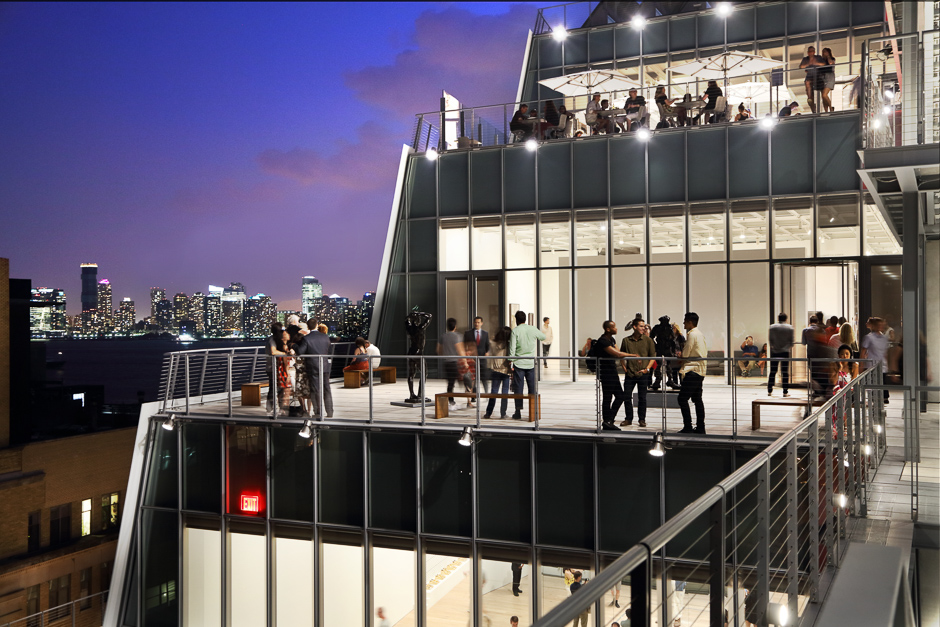
View of the Whitney’s Terrace. Photo by Ed Lederman.
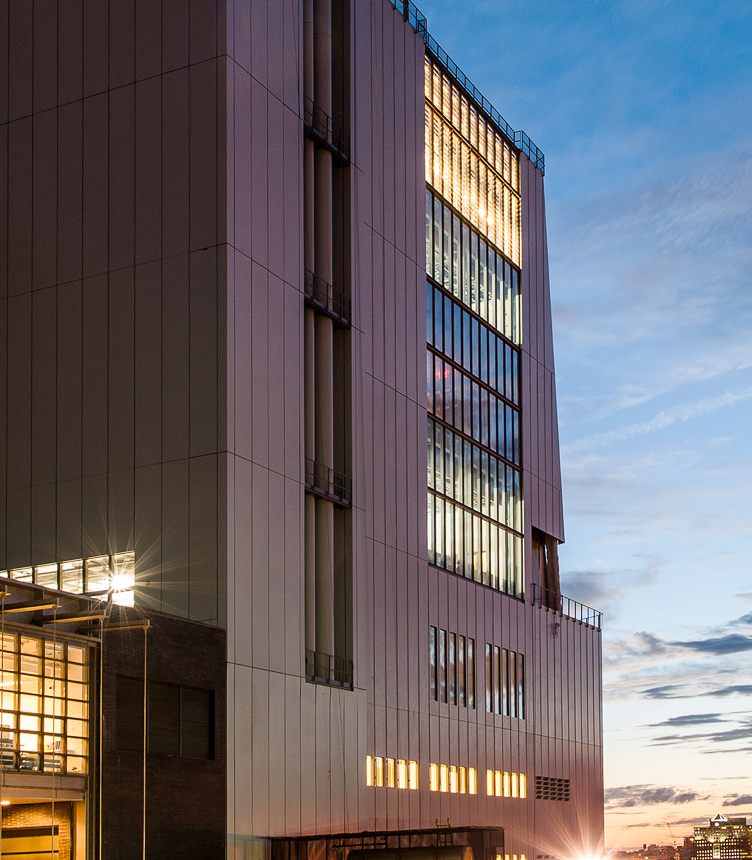
View facing the Hudson River. Photo by Karin Jobst, 2014.
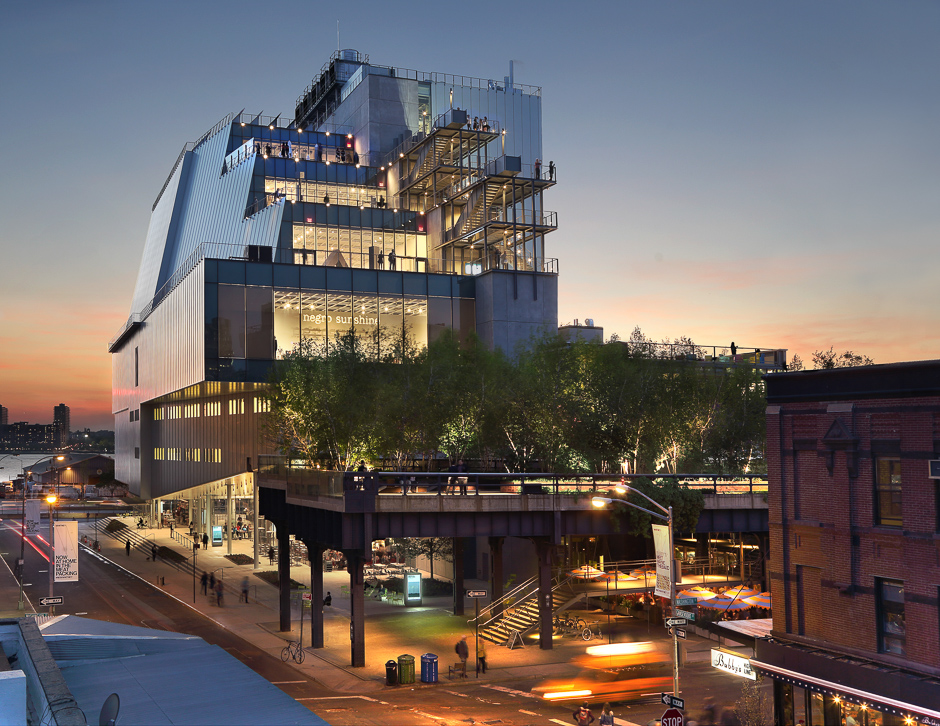
Photo by Ed Lederman
One of the most significant cultural projects in New York City this decade, the Whitney Museum of American Art’s new building on Gansevoort Street in downtown Manhattan’s Meatpacking District, opened on May 1, 2015. Named the Leonard A. Lauder Building, it has been hailed as “a deft, serious achievement, a signal contribution to downtown and the city’s changing cultural landscape” (New York Times).
Designed by Pritzker Prize-winning architect Renzo Piano and conceived as a laboratory for artists, the building affirms the Whitney’s role as the leading museum of modern and contemporary art of the the United States. Indoor and outdoor galleries with striking views west to the Hudson River and east into the city provide extraordinary possibilities for artists, curators, and audiences. The building enables the Whitney to present its pioneering special exhibitions—including the signature Whitney Biennial—in the context of an expansive installation of its renowned collection of twentieth- and twenty-first-century American art.
Adam D. Weinberg, the Whitney’s Alice Pratt Brown Director, describes the building as “a place of focused engagement, a site for discovery and risk-taking. Here the most important, challenging, and courageous artists of our time will have a constant presence. Our permanent collection galleries afford a level of space unprecedented in our history to display iconic works and present provocative new narratives of art in the United States. The adjacent terraces are outdoor galleries with astonishing views over the rooftops of New York and function as urban stages. The new building is the perfect home for our dynamic program of special exhibitions, screenings, and performances that will continue to embrace the art of the present, but now against the backdrop of more than one hundred years of history.”
————————————————-
Building Highlights
Designed by Renzo Piano Building Workshop in collaboration with Cooper Robertson, the building takes a strong and strikingly asymmetrical form—one that responds to the industrial character of the neighboring loft buildings ad overhead railway while asserting a contemporary, sculptural presence. The 220,000-square-foot, nine-story building includes approximately 50,000 square feet of indoor exhibition space.
“The design of this building emerged from many years of conversations with the Whitney, which took us back to the Museum’s origins,” Renzo Piano commented, “We spoke about the roots of the Whitney in downtown New York, and about this opportunity to enjoy the open space by the Hudson River. Museum experience is about art, and it is also about being connected to this downtown community and to this absolutely extraordinary physical setting.”
A dramatically cantilevered entrance along Gansevoort Street shelters an 8,5000-square-foot public plaza, the Pamella and Daniel DeVos Family Largo, now a popular gathering space steps away from the southern entrance to the High Line elevated park. Piet Oudolf, the influential Dutch horticulturalist who was part of the team responsible fore the High Line, collaborated with Renzo Piano and Mathews Nielsen on the overall landscape design, which echoes the untamed quality of the High Line to create a harmonious balance of visual elements with the Museum’s surroundings.
On the first floor, the John R. Eckel, Jr. Foundation Gallery is accessible to the public free-of-charge. At approximately 18,000 square feet, the fifth floor Neil Bluhm Family Galleries are the largest column-free museum exhibition space in New York. The sixth-floor galleries and the seventh-floor Robert W. Wilson Galleries are devoted to the permanent collection; the sky-lit Hurst Family Galleries on the eighth floor feature special exhibitions. Approximately 13,000 square feet of outdoor galleries on the building’s cascading terraces offer dynamic exterior exhibition and performance spaces, which extend the gallery experience outside.
The building includes several firsts for the Whitney: dedicated space for education programs in the Laurie M. Tisch Education Center; the multi-use, 170-seat Susan and John Hess Family Theater; and the Sondra Gilman Study Center for works on paper—as well as the flexible Kaufman Gallery for film, video, and performance; the state-of-the-art Bucksbaum, Learsy, Scanlan Conservation Center; and the Frances Mulhall Achilles Library.
The interiors of the Whitney’s four distinctive elevators comprise an artwork, Six in Four, by Richard Artschwager (1923-2013) …. employing plastic laminate, glass, and etched stainless steel, each elevator is an immersive installation in which visitors have the surprising experience of standing under a table; being on a rug in front of a mirror; finding oneself opposite an unexpected door and next to a window; or contained in an enormous, floating woven basket.
————————————————-
Leadership in Energy & Environmental Design
The Whitney is one of the most environmentally friendly museum buildings in the world, and the first art museum in New York to pursue LEED Gold status. The building’s design incorporates a green roof, plaza level planters, and a storm water detention tank to reduce site runoff, while one fifth of the construction materials, such as the reclaimed pine floors were recycled. The Whitney also has a green housekeeping plan to limit the use of harmful chemicals within the building.
~~~~~~~~~~~~~~~~~~~~~ ARCHIVAL PLANS / RENDERINGS 2015 ~~~~~~~~~~~~~~~~~~~~~
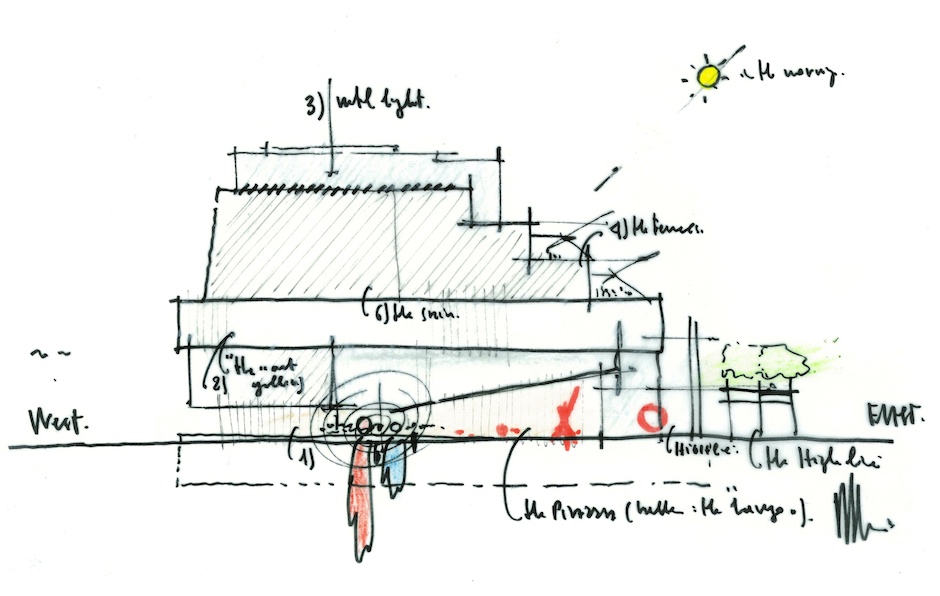 Image courtesy Renzo Piano Building Workshop in collaboration with Cooper, Robertson & Partners
Image courtesy Renzo Piano Building Workshop in collaboration with Cooper, Robertson & Partners
WHITNEY MUSEUM OF AMERICAN ART
Opening Spring, 2015
According to architect Renzo Piano, “The design for the new museum emerges equally from a close study of the Whitney’s needs and from a response to this remarkable site. We wanted to draw on its vitality and at the same time enhance its rich character. The first big gesture, then, is the cantilevered entrance, which transforms the area outside the building into a large, sheltered public space. At this gathering place beneath the High Line, visitors will see through the building entrance and the large windows on the west side to the Hudson River beyond. Here, all at once, you have the water, the park, the powerful industrial structures and the exciting mix of people, brought together and focused by this new building and the experience of art.”
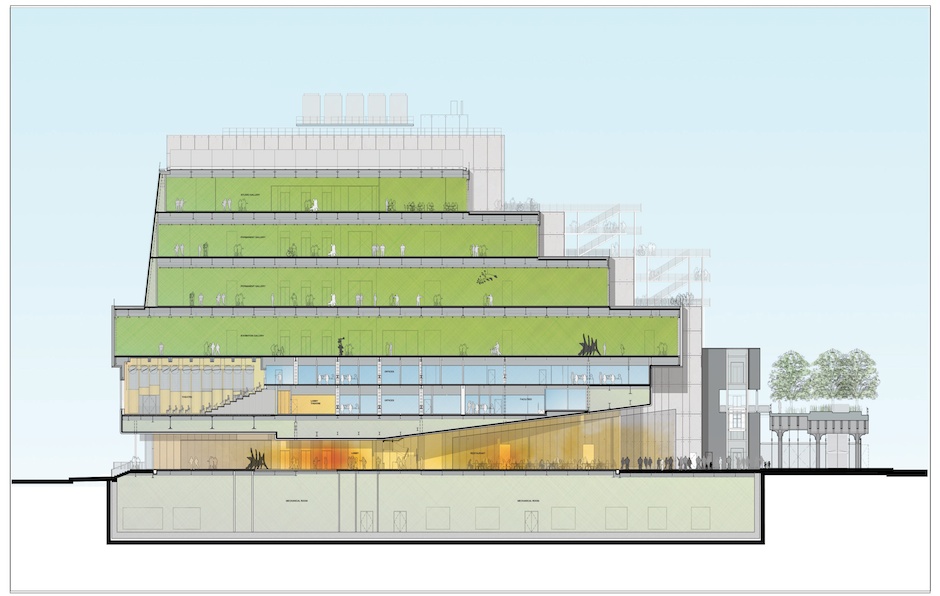 Image courtesy Renzo Piano Building Workshop in collaboration with Cooper, Robertson & Partners
Image courtesy Renzo Piano Building Workshop in collaboration with Cooper, Robertson & Partners
The new Whitney building will include more than 50,000 square feet of indoor galleries and 13,000 square feet of outdoor exhibition space on a series of rooftops facing the High Line, providing long-awaited opportunities to show more of the Whitney’s collection in tandem with temporary exhibitions.
The collection has grown from about 2,000 works at the time of the building’s opening, in 1966, to more than 19,000 works today. An expansive gallery for temporary exhibitions will be approximately 18,000 square feet in area, making it the largest column-free museum gallery in New York City. Gallery space for ground-floor exhibitions (accessible free of charge), two floors for the permanent collection, and contemporary artists’ projects on the top floor will total approximately 32,000 square feet.
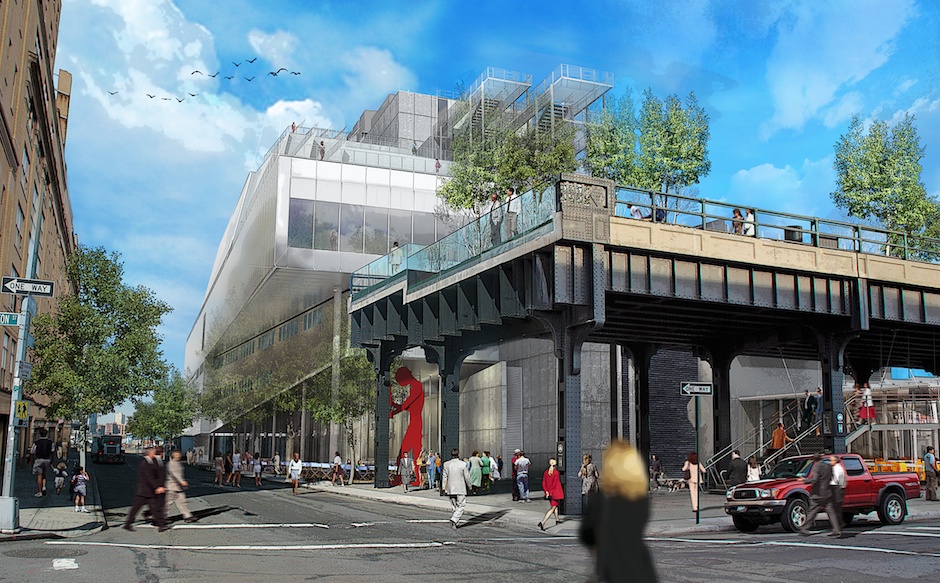 Image courtesy Renzo Piano Building Workshop in collaboration with Cooper, Robertson & Partners
Image courtesy Renzo Piano Building Workshop in collaboration with Cooper, Robertson & Partners
The dramatically cantilevered entrance along Gansevoort Street will shelter an 8,500-square-foot outdoor plaza or “largo,” a public gathering space steps away from the southern entrance to the High Line. The new building will engage the Whitney directly with the bustling community of artists, gallerists, students, educators, entrepreneurs, and residents in the Meatpacking District, Chelsea, and Greenwich Village, where the Museum was founded by Gertrude Vanderbilt Whitney in 1930.
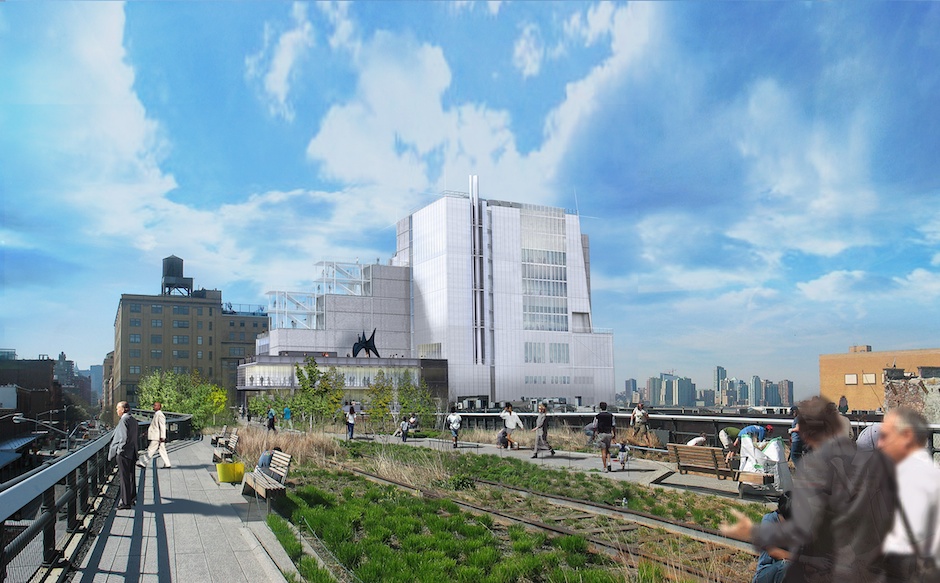 Image courtesy Renzo Piano Building Workshop in collaboration with Cooper, Robertson & Partners
Image courtesy Renzo Piano Building Workshop in collaboration with Cooper, Robertson & Partners
The building also will include an Education Center offering dedicated space for state-of-the-art classrooms; a multi-use black box theater for film, video, and performance with an adjacent outdoor gallery; a 170-seat theater with double-height views of the Hudson River; and a Works on Paper Study Center, large art Conservation Lab, and Library Reading Room. The classrooms, theater, and study center are all firsts for the Whitney. As well, a retail shop on the ground-floor level will contribute to the vibrant street life of the area. A ground-floor restaurant and top-floor café will be conceived and operated by renowned restaurateur Danny Meyer and his Union Square Hospitality Group, which recently opened Untitled, the new restaurant in the Whitney at 945 Madison Avenue.
Mr. Piano’s design takes a strong and strikingly asymmetrical form—one that responds to the industrial character of the neighboring loft buildings and overhead railway while asserting a contemporary, sculptural presence. The upper stories of the building will stretch toward the Hudson River on the west side and step back gracefully from the elevated park of the High Line on the east side.
The building is projected to open to the public in 2015.
——————————————
 When the Whitney Museum’s new Renzo Piano-designed home on Gansevoort Street opens its doors in the spring of 2015, the inaugural installation will be the largest and most comprehensive display to date of the Whitney’s unparalleled permanent collection of 20th and 21st century American art.
When the Whitney Museum’s new Renzo Piano-designed home on Gansevoort Street opens its doors in the spring of 2015, the inaugural installation will be the largest and most comprehensive display to date of the Whitney’s unparalleled permanent collection of 20th and 21st century American art.
This ambitious display will offer new perspectives on art in the United States since 1900, following the Whitney’s in-depth analysis of its collection of more than 21,000 works, an initiative that has been underway since 2012. The opening presentation will fill over 60,000 square feet of indoor and outdoor exhibition space, utilizing all galleries in the building, and it will celebrate the Whitney’s extraordinary new home and the richness of American art. The sweep of the collection is echoed in the building’s magnificent multiple perspectives: the future Whitney looks south toward the Statue of Liberty and Ellis Island, east into the city, and west across the Hudson toward the expanse of the country.
——————————————
Project Team Owner’s Rep: Gardiner & Theobald, Inc.
Design Architect: Renzo Piano Building Workshop
Executive Architect: Cooper, Robertson & Partners
MEP & Lighting Engineer: Ove Arup & Partners
Structural Engineer: Robert Silman Associates
Construction Manager: Turner Construction, LLC
——————————————
www.whitney.org
~~~~~~~~~~~~~~~~~~~~~~~~~~~~~~
Visit these AAQ Museum Architecture Portfolios (links)
Glenstone, Potomac, Maryland / 2006 – 2008
Harvard Art Museums, Cambridge / 2014
MAD — Museum of Arts and Design, NYC / 2016
Parrish Art Museum, Water Mill, NY / 2012
The Clark Institute of Art, Berkshires / 2014
The Morgan Library & Museum, NYC / 2006
Wadsworth Atheneum Museum of Art, Hartford / 2017
Yale University Art Gallery, New Haven / 2012
__________________________________________________________
